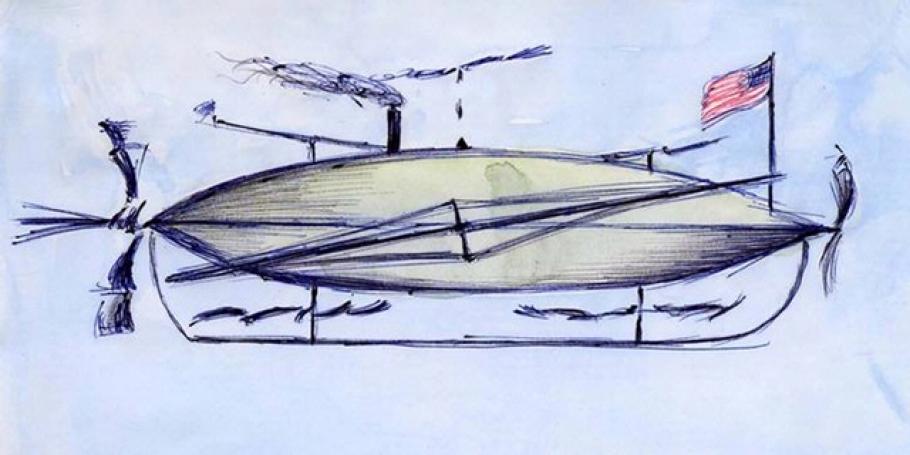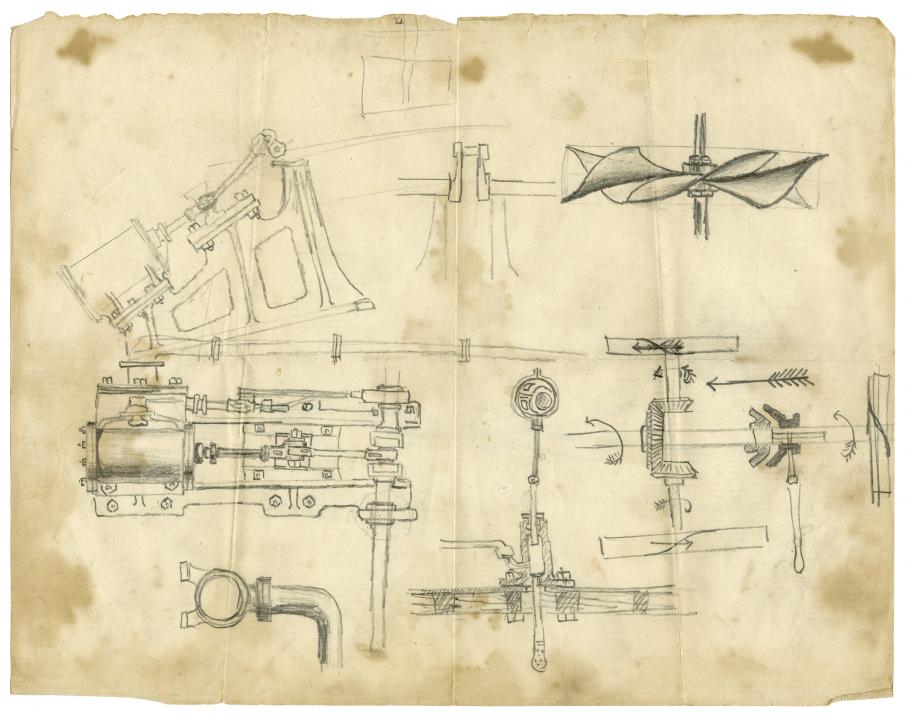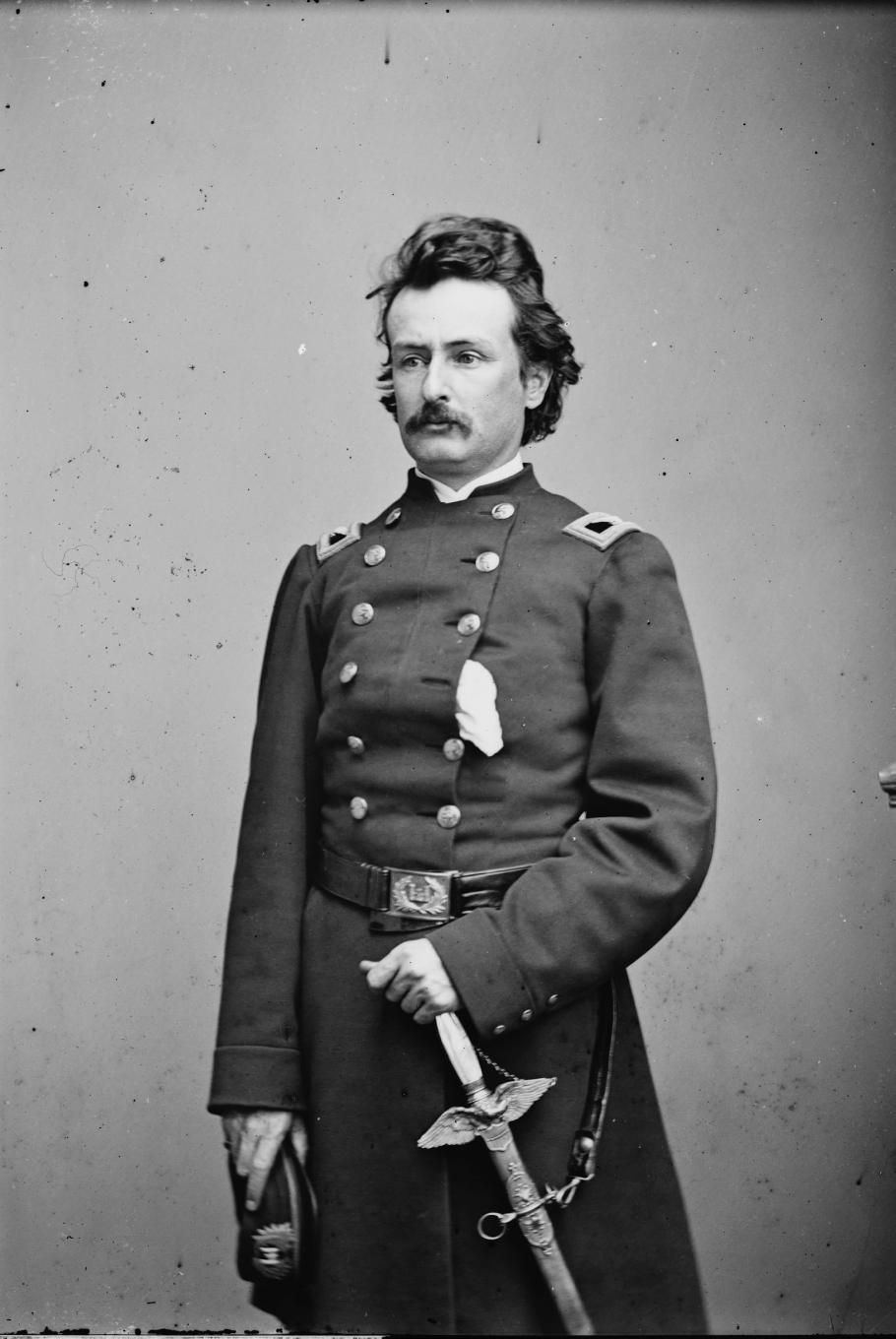In a recent post, Tom Paone described the plans of William Powell, a resident of Mobile, Alabama, for a Confederate helicopter. In fact, Powell’s scheme was only the tip of the iceberg. In researching a scholarly paper on Civil War Planes, I have catalogued a score of plans for powered flying machines developed on both sides of the battle lines. Perhaps the most interesting of these was the work of Colonel Edward Wellman Serrell , a professional engineer serving with the Union Army of the James in 1864. Inspired by the well-known hand-held helicopter toy, Serrell had begun studying aeronautics several years before the War. Once in uniform he conducted full-scale tests of metal rotor blades in the field, then convinced his commander, General Benjamin Butler, to order him to duty in Philadelphia, where he raised the money with which to build his Reconoiterer, a flying machine designed to conduct reconnaissance missions over enemy lines.
The machine would be lifted into the air by twin rotary wings set above and below the fuselage, and driven forward by propellers at the front and rear. Two large flat copper plates, each measuring nine feet in span and 45 feet, 8 inches long, were to be positioned on either side of the shell. The two plates were connected to a crank running through the fuselage, so that the crew could incline or depress the wings up to six degrees above or below the horizontal to provide additional lift.
Plans called for the fuselage to be a cigar-shaped copper shell measuring 52 feet long, with landing runners on the underside. A chamber at the bottom of the shell would serve as a reservoir for the boiler water, with a second chamber above it for the coal. A light-weight, high pressure vertical steam engine with a vertical boiler were housed in the rear of the shell. A series of moveable balls were to be used to balance the Reconnoiterer. The designer estimated the total weight at take-off, with a crew of three on board and enough water and fuel for an eight-hour flight, at 8½ tons.
Unlike William Powell, and most other armchair aviators of the Civil War era, Serrell conducted serious engineering tests, obtained what he thought would be a suitable steam power plant, and had large sections of the hull of a smaller three-man demonstration craft under construction when hostilities ended. He continued his effort for a time, corresponding with leading aeronautical researchers in Europe, but ultimately abandoned the venture when it became apparent that steam propulsion was inadequate.
While Serrell and others who dreamed of winged flight during this era were destined never to get off the ground, the number of flying machine projects that appeared during the middle years of the nineteenth century underscores American enthusiasm for technology, even for the possibility of a machine that most feet-on-the-ground citizens regarded as something akin to a perpetual motion machine. Dreamers and doers like E.W. Serrell deserve to be remembered.
Fortunately, the collection of research materials regarding what might be thought of as the pre-history of aviation continues to grow. During the course of research on aeronautical experimentation in nineteenth century America, and with the help of my colleague Mark Ragan, an important cache of Edward Wellman Serrell’s papers relating to his flight experiments was discovered in the hands of his descendants. Through the generosity of the family, the records of this pioneering foray into heavier-than-air flight are now safely preserved in the archive of the National Air and Space Museum, where they will be available to researchers in generations to come.



